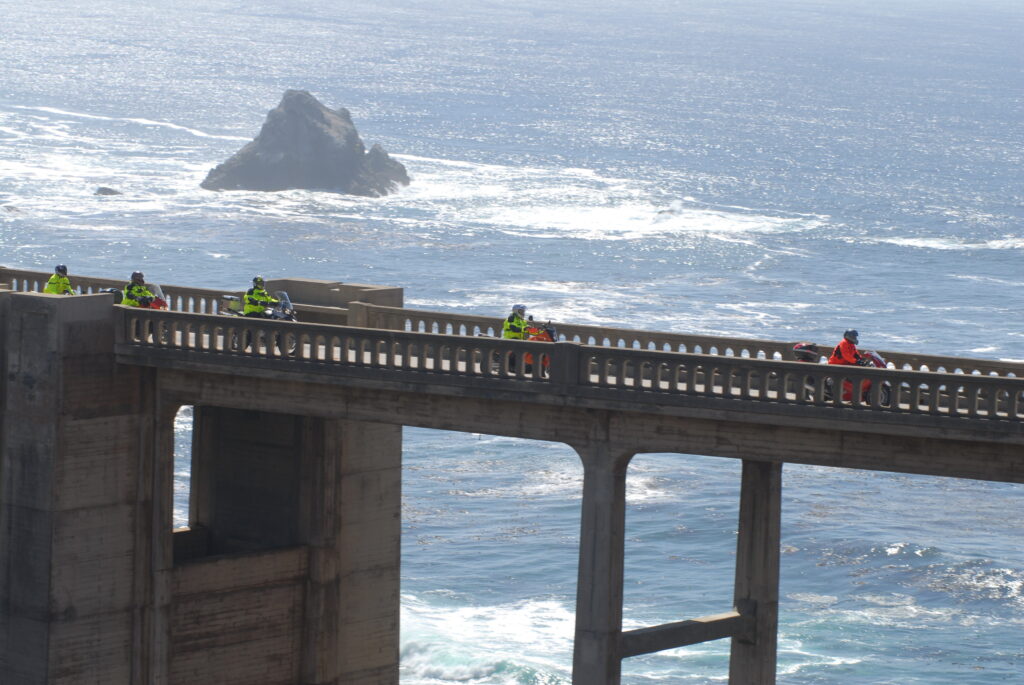Regional Features and Hazards Riders Should Know
With more than 74,000 miles of scenic roads, Oregon is a rider’s nirvana, offering world-class motorcycling adventures. But it’s not for the faint of heart. By the time you make your way westward, you will cross practically every kind of terrain on the planet – from open desert plateaus to lush forests and lofty mountain passes to ocean beaches. This variety is what keeps riding here interesting – but there are some unique challenges you need to keep in mind when you set out on your Northwest adventure.

Get Ready for Mother Nature’s Playground
All the different Oregon terrains make their own weather. It’s not uncommon to go from sunny and warm in the valley to below freezing on a mountain pass, and from blowing sand to blowing snow to just plain blowing – all in one day’s ride. That means the road conditions also change with every microclimate you encounter, so be prepared for moss, mud, gravel, leaves, sand and even black ice or snow.
Be Blown Away by the Views – Not the Winds
Riding through the Columbia River Gorge is nothing short of awe-inspiring, but the fierce cross-winds there may catch you by surprise. Many riders have been pushed into the neighboring lane. Mornings in the Gorge tend to be a calm part of the day, so schedule your ride to take advantage of it. It’s a good idea to check the Gorge weather reports before you head out. And sometimes it’s just plain better to wait it out.

Don’t Let the Rubber Leave the Road
Between the Coast Range, high desert passes of Eastern Oregon and the Cascade Range, there’s no shortage of steep grades, tight curves and awesome views that can be both fascinating and unnerving. If you don’t want to sail off the highway while gawking, pull over at a viewpoint to take in the vistas.

Keep on Rollin’ Over the Rivers
Plenty of rivers means plenty of bridges, offering fun and picturesque riding experiences. But a number of Oregon’s bridges have grated steel decks that can cause narrow front tires to wander unpredictably. To cross one safely, follow a few basic rules: Put some space between yourself and the vehicle in front; slow down before you approach the grated portion; keep your eyes up – not on the grated deck; relax your grip; and ride at a steady pace even when it feels like you are drifting. If you’d rather skip this bit of excitement, a little research ahead of time will help you find alternate routes.


Save Tipping One Back for After the Ride
Oregon’s Willamette Valley is home to award-winning wineries, and excellent microbreweries dot the state – many of them in fun-to-ride places. By all means, stop over and sample the wares – but be smart and save the drinking for after the riding. Oregon has tough DUII laws, but more than that, we’d like you to live through your trip here!

Timber! Long Loads Comin’ Through
Abundant timberland from the valley to the coast means logging. Beware of log trucks that may appear suddenly from side roads, dragging mud, stones and bark onto the pavement. They often cross the centerline in tight curves and spit stones from between the dual tires – stay well away from them. Another thing to watch for is triple commercial trucks. Triples tend to slow down on upgrades, and accelerate on downgrades. In gusting cross winds the end trailer can wag into an adjacent lane, so give them a wide berth.

Avoid an Encounter with the Locals
Northwest’s wooded areas are teeming with wildlife – such as deer and elk, which tend to be particularly active in early morning and after sunset. If you see animal warning signs, keep your speed down and be on the lookout for critters – they don’t brake for motorcycles!
Head for the Beach, but Skip the Sand Traps
The Pacific Northwest has one of the most dramatic and unspoiled coastlines in the world and Oregon allows vehicles on some beaches. Before you take a spin on the pristine stretch of sand, keep two things in mind: The sand may appear flat and hard, but in reality is treacherously soft in spots, so take care not to get stuck. And, salt water is very corrosive, so rinse your machine with fresh water after a day on the beach.
In Oregon, there’s an awesome riding adventure around almost every curve – far more than we can begin to cover here. But, wherever your heart and wheels take you in our parts, make sure they get you back home safely.

This information is provided courtesy of Oregon Department of Transportation and the Governor’s Advisory Committee on Motorcycle Safety. It is available for PDF download here.